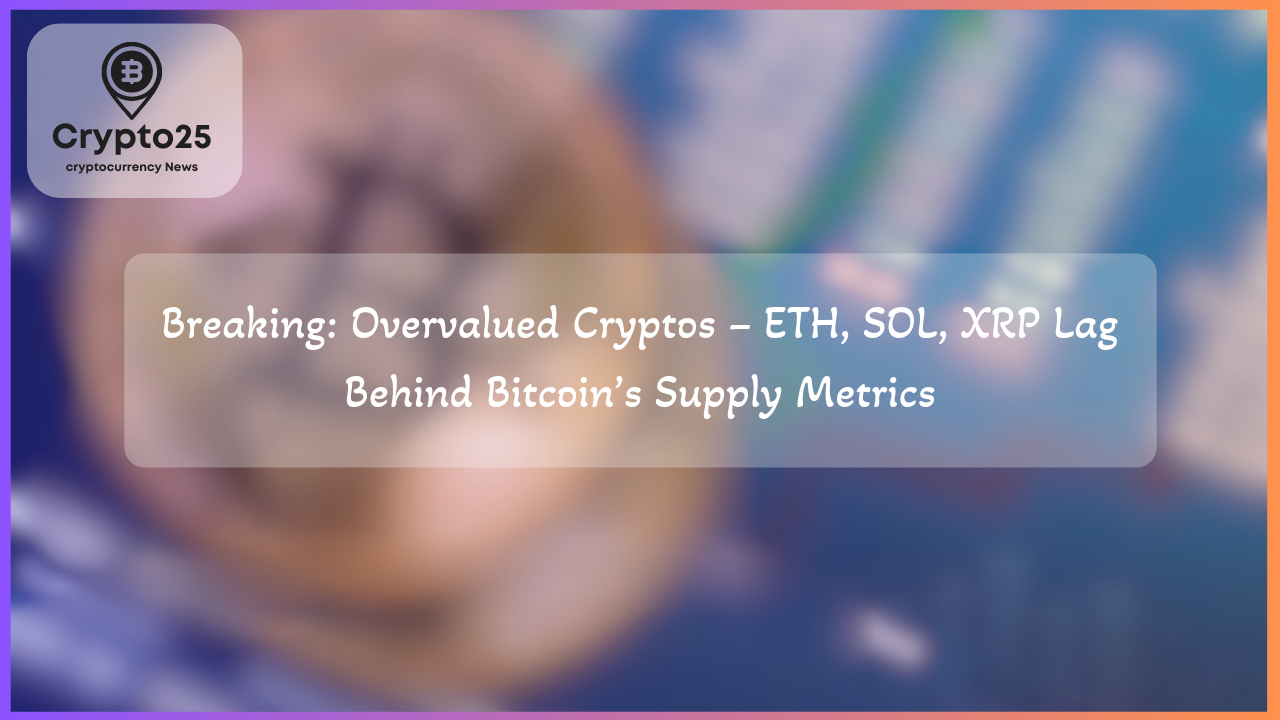
The world of cryptocurrency continues to stoke debates, with Bitcoin’s capped supply often spotlighted as a defining feature. Samson Mow, entrepreneur and CEO of JAN3, recently highlighted what he termed the undervaluation of Bitcoin compared to other major cryptocurrencies like Ethereum, XRP, and Solana. His analysis dissects market caps and supply metrics to unveil the role of “unit bias” in shaping perception and value.
### Why Bitcoin’s Fixed Supply Model Sets It Apart
Bitcoin (BTC) remains a cornerstone of the cryptocurrency market, primarily due to its finite supply of 21 million coins. Samson Mow argues that this scarcity differentiates Bitcoin from altcoins, whose higher token supplies often obscure their relative value. By dividing the market cap of Ethereum (ETH), XRP, and Solana (SOL) by Bitcoin’s 21 million supply cap, Mow recalibrates their valuations. For instance, if Ethereum followed Bitcoin’s scarcity model, its comparative worth would amount to $9,200, much lower than current price metrics suggest. Similarly, XRP and Solana would be valued at $5,800 and $3,400, respectively.
This analysis underscores what Mow calls “unit bias,” where people see altcoins with lower per-unit prices—like XRP priced at $2—as more affordable than Bitcoin at $85,000. However, this perception overlooks the fundamental differences in token supply, issuance mechanisms, and long-term sustainability.
### Ethereum, XRP, and Solana Struggle Against Bitcoin’s Dominance
Ethereum, known for its shift to a deflationary model since the implementation of EIP-1559, burns transaction fees to counter inflation. Yet, its circulating supply remains dramatically higher than Bitcoin’s fixed cap. Similarly, XRP relies on a pre-mined supply of 100 billion tokens, almost half of which are still locked. On the other hand, Solana employs a dynamic inflationary issuance model, which gradually decreases over time but still contrasts sharply with Bitcoin’s predictable scarcity.
These supply differences play a significant role in fostering unit bias. For example, an investor may prefer Ethereum or XRP simply because the price per token appears lower, despite their relative overvaluation on Bitcoin’s scale. According to Mow, this misconception is especially rampant among newer participants in the cryptocurrency market, whom he describes as “uninitiated.” This misunderstanding, he suggests, hinders Bitcoin’s potential for wider adoption.
| Cryptocurrency | Adjusted Price (1/21M Supply) |
|---|---|
| Ethereum (ETH) | $9,200 |
| XRP (XRP) | $5,800 |
| Solana (SOL) | $3,400 |
### Bitcoin Dominance and Future Market Trends
Bitcoin’s capped supply and decreasing issuance through halvings have long been viewed as intrinsic strengths that drive its market dominance. Currently, Bitcoin dominance stands at 63.71%, according to TradingView. Moreover, dominance has demonstrated significant growth, rising 14.48% year-over-year, with notable increases of 9.71% in 2023. These trends suggest that Bitcoin’s appeal as a store of value and hedge against inflation is resonating with both new and seasoned investors.
Mow emphasizes that as market education increases, Bitcoin dominance could soar even higher. He predicts diminishing interest in altcoins as the logic behind their current valuations unravels against Bitcoin’s transparent and fixed model. The psychological appeal of buying “cheap” coins will likely wane as investors gain a nuanced understanding of token supply and true economic value.
Meanwhile, Ethereum’s transition to Proof of Stake (PoS) and the deflationary mechanics of EIP-1559 show efforts to align closer to Bitcoin’s ethos of scarcity. However, the presence of a much larger base supply keeps it distanced from matching Bitcoin’s financial narrative. Similarly, XRP and Solana face challenges owing to their supply dynamics, especially when compared against Bitcoin’s fixed issuance.
### Conclusion
Samson Mow’s valuation analysis serves as a thought-provoking lens into Bitcoin’s unparalleled dominance within the cryptocurrency market. By exposing the oversights of unit bias, he underscores the importance of understanding the supply mechanics and market caps that differentiate Bitcoin from altcoins like Ethereum, XRP, and Solana. With Bitcoin’s dominance steadily climbing and education around its fixed-supply advantage increasing, the crypto market seems poised for a potential recalibration. As more investors grasp Bitcoin’s scarcity-driven value proposition, its market position may only solidify further, setting the stage for a transformative shift in the industry.
